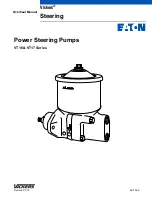
3/8 in. dr Composite Air Ratchet
8
For technical questions call: 1-800-665-8685
8344103
V 2.0
4. Avoid using an air hose that is too long. The longer the hose, the lower the pressure that
reaches the tool, possibly causing it to cease functioning. As well, a longer hose can become a
tripping hazard.
5. Air tool CFM consumption ratings are based upon a 25% duty cycle. If you require continuous
duty, a larger compressor is required.
AIR SOURCE INSTALLATION
WARNING! Never use pure oxygen, carbon dioxide, combustible gases or any bottled gas as an air
source for a tool. Such gases are capable of causing an explosion and serious injury to persons.
1. Set the air pressure regulator on the air compressor to the recommended PSI level (see
Specifications). Do not exceed the tool recommended air pressure. Excess pressure could
result in damage to the tool, to your workpiece or serious injury.
2. Prepare a standard 1/4 in. air connector for use with your tool. Wrap the threaded portion of
the air connector with thread seal tape. Wrap in a clockwise direction so it will not unravel when
attaching to a quick connector. Attach it to the tool air inlet and tighten.
3. Attach a standard quick connector to the air source’s hose. Attach the air hose to the tool’s air
connector.
4. Check the air line and its connections for air leaks. Do not use the tool until you have repaired
all air leaks.
DISCONNECTING AIR SOURCE
WARNING! Failure to follow these steps could result in severe injury, tool or property damage.
Disconnect tool from air source before cleaning, servicing, changing parts/accessories or when not in
use.
1. Turn the air regulator to the OFF or L position.
2. Turn off the air compressor.
3. Disconnect the air pressure hose.
4. Discharge any residual pressure inside the tool.
AIR TOOL LUBRICATION
CAUTION! NEVER use a penetrating oil to lubricate the tool. Penetrating oil may act as a solvent that
will break down the grease and cause the tool to seize up.









































